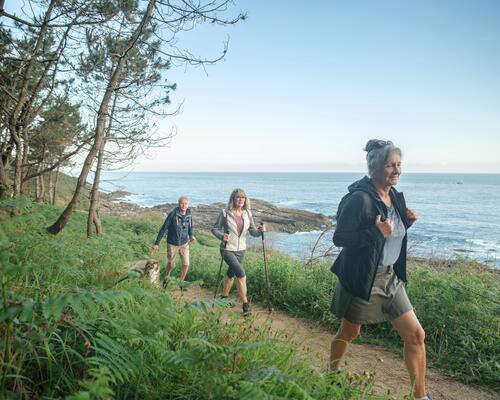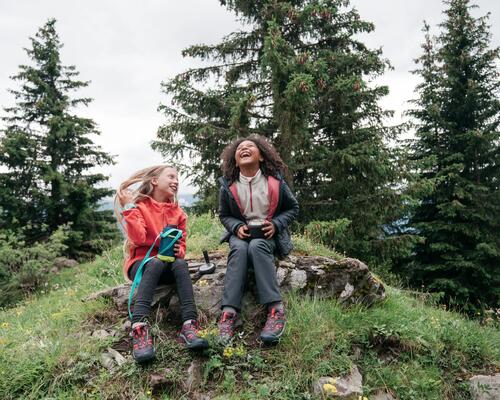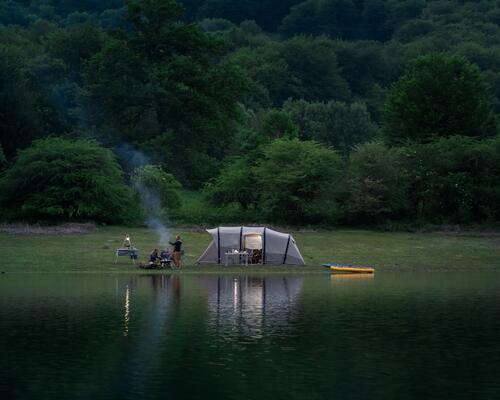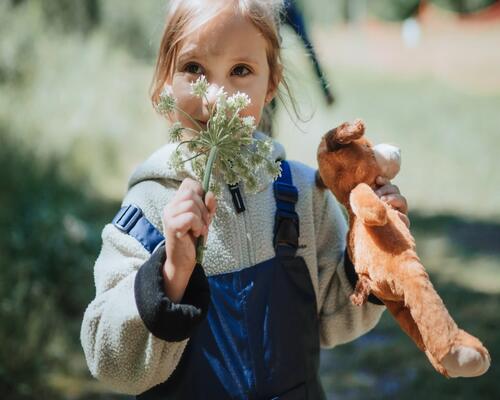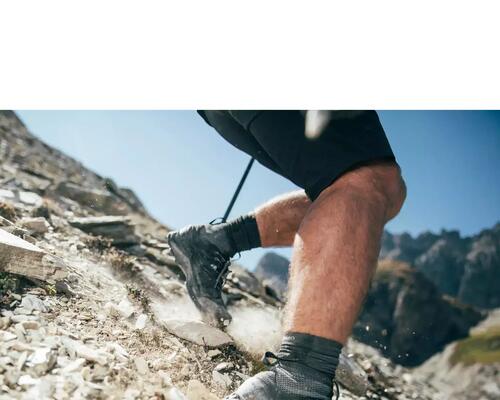
Mountain hiking: a glossary of terms you should know
Ubac, bergschrund, gully... there are many terms with which you'll be unfamiliar? Check out our mountain hiking glossary to help you get the most out of your next trip.
a
A snow cornice
Accumulation of wind-blown snow on a ridge. This mass of self-supporting snow often forms an overhang, protruding beyond the ridge, posing a real hazard if it falls.
Adret and ubac
An adret slope is the land on the side of a valley that receives the most sunlight. Conversely, an Ubac slope refers to the opposite side.
Altitude sickness
Condition caused by inadequate acclimatization at high altitudes. Symptoms vary but can include headaches, nausea, insomnia and even swelling (depending on severity).
b
Bergschrund or roture
A Bergschrund is a crevasse that forms at the edges of the glacier, separating it from the original landform. The area between the glacier and snow or ice slope is referred to as the bergschrund; the area between the glacier and rock wall is referred to as the roture. They are formed by the glacier's movements.
Bivouac
Temporary outdoor camp. A bivouac camp is set up in the evening and then dismantled the next day (at sunrise). This prevents natural parks being turned into camp-sites, ensuring they remain tent-free during the day. Check out our advice on bivouacking.
c
Cirque
This is the name given to a circular or semi-circular (arena-like) shaped mountain. This shape may be the result of erosion or indicate the presence of an old glacier or volcano.
e
Elevation
This term refers to the difference in height between two points. The French term for "elevation" (dénivelé) is the subject of not inconsiderable controversy: although historically a feminine word, it has been used incorrectly as a masculine noun. Today in France, this non-conventional masculine use has now become the norm.
f
Firn
Firn is an isolated area of persistent snow (you can even encounter firn in summer). A firn layer usually forms in areas where there is little sun exposure. Not to be confused with permanent snow.
Flake
Section of rock jutting out from the rock wall.
Foehn
Dry, hot wind, typical of the Alps (French, Swiss and Austrian).
g
Glacier
A pile of ice formed by the accumulation of layers of snow. A glacier comprises several parts: bergschrund, moraine and serac.
Grt
This acronym stands for "chemins de Grande Randonnée" (long distance footpaths). These footpaths were created by the Fédération Française de Randonnée Pédestre (French Ramblers' Association) to encourage and promote hiking. Find out how to interpret mountain footpath signs.
Gully
A very narrow, enclosed corridor of snow or ice that often forms in dihedrals (a dihedral is the name given to the area where two planes of rock intersect to create an acute angle).
i
Ign
The National Institute of Geographic and Forest Information (Institut National de l'Information Géographique et forestière) analyses, and provides cartographic representations of, French national territory, including its famous "IGN maps" and essential topographic hiking maps.
l
Lapiaz
Geological formation, specific to limestone, which forms when run-off rainwater hollows out the rock. These formations can be dangerous when hiking, because you can end up walking on areas of rock that are extremely uneven and often very sharp. In winter, the rock holes are covered with snow and therefore invisible so you're better off avoiding this type of terrain.
m
Moraine
Moraine is an accumulation of rock debris transported by the moving glacier.
p
Permanent snow
Permanent snow is seen in mountainous areas where days of heavy snowfall outnumber snow-free days. A number of different factors (sunshine, atmospheric pressure etc.) means that precipitation in this area falls as snow, ensuring the peaks remain snow-capped. This snow is not "permanent" but rather constantly replaced!
r
Rock climbing
Climbing rock faces or rocky structures. Rock climbing, when hiking, involves using your hands to negotiate certain steep sections of the ascent.
s
Serac
A large block of ice, partially detached from a glacier. Seracs are formed when glaciers fracture and crack.
Slope
Not to be confused with elevation. A slope corresponds to the tilt angle of a vertical surface. We use the term slope when the angle between the ground and the wall is less than 90 degrees.
t
Trekking
Multi-day hikes (with nights spent in a bivouac or mountain refuge).
u
Upstream and downstream
The terms upstream and downstream are very useful for getting your bearings. On a path between a mountain pass and a valley, for example, UPstream indicates the side that goes UP to the mountain, while DOWNstream indicates the side that goes DOWN to the valley.
Have you ever come across a mountain chalet called "l'Eterlou"? Well next time you do, you'll know it means a young, male chamois (the female equivalent is "éterle"!)!
